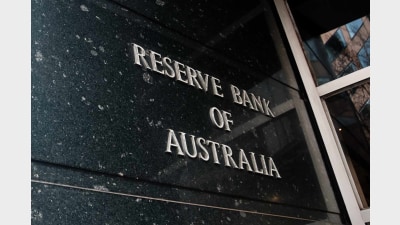The Royal Commission into Misconduct in the Banking, Superannuation and Financial Services Industry held the financial services industry in its thrall for much of last year. The findings, as we know, were damning.
Its terms of reference went beyond legal requirements and considered “whether any conduct, practices, behaviour or business activities fall below community standards and expectations”. The quality of relationships with various groups in society are inevitably an important part of this consideration.
And indeed, much of the Royal Commission was focused on relationships – particularly with customers but also regulators and intermediaries.
The 2018 Commonwealth Bank of Australia Prudential Inquiry by Australian Prudential Regulation Authority (APRA) (the CBA Inquiry) was also triggered by a series of incidents involving relationships between CBA customers, advisers and regulators.
So, one might reasonably conclude that relationships were at the heart of the problems.
The response of the various markets to unfolding events at the Royal Commission graphically demonstrated how social or relational events can destroy significant business value. In turn this shows the considerable worth of the social capital of these organisations, and its inherent volatility and fragility.
My colleague, Hadyn Bernau, and I turned our minds to how some of the ideas from our previous work might be of benefit, and from that came the suggestion of a Social Condition Report (SCR) that we
explored in an in-depth paper. I have touched on some of the main ideas below.
Our starting point is the proposition that the social condition of a financial services business is no less important to its long-term success than its financial condition. What do we mean by social condition? In simple terms, the quality and value of relationships with key groups in society, and the risks to those relationships.
Relevance for super funds
The super industry came through the Royal Commission with little damage. So why might social condition be relevant for them?
First, many of the findings of the Royal Commission could be applicable to super funds – it is unlikely that their relationships with key social groups are perfectly strong and risk-free.
Further, super funds have a keen interest in the ongoing social and financial condition of banks and other institutions, via their major investments.
And, of course, super funds often source services from other institutions – insurers, investment managers and administrators in particular. Super funds would therefore be exposed to risks in their own direct relationships with these institutions, as well as to risks arising from those institutions’ broader relationships.
Social Condition Assessment: Building social capital and goodwill
We argue that it is inherently sensible from the shareholders’ perspective for a business to build and maintain high quality relationships with other members of society. In other words, a social group provides social capital and the value to the business is in social goodwill.
We also make the point that if a subset of society (say customers) is to provide relationship capital then that social group must perceive value for themselves – otherwise they will withdraw their capital.
Who? Key Social Groups
Any institution has relationships with various groups in society – what we call key social groups (KSGs). Each KSG can be a source of significant social capital and at the same time risk for an institution. The idea is to address the quality and value of the relationship separately for each.
The KSGs might include, for example, customers (individuals, employers, industry groups), employees, suppliers and partners, shareholders, public (ex-customers and others), politicians and bureaucrats, regulators, and media.
How? Methodologies
It is one thing to say that the quality of relationships should be assessed and measured; it is another to do this in structured way that will prove of real value to management and board.
We have drawn on our experience with two particular methodologies to show that it is quite possible to assess and measure the quality of relationships in a structured way - relational analytics and signal analysis. The two methods in combination are complementary and synergistic, providing richer insights when used together.
Signal analysis refers to the use of human signals to assess and predict human behaviour. Human signals, which can include such things as smiles, frowns, gestures, car types, house locations and fashion styles, help to convey who we are (or who we want to be). Because these signals are often the result of conscious decision-making, they cannot be relied on as good indicators.
There are other signals, however, that are processed unconsciously or are otherwise uncontrollable. In one application of this thinking, signals include who people communicate with, how they communicate with each other, and the language styles they use. These signals are used to measure and assess human behaviour and personality attributes in an authentic and accurate manner.
Signal analysis makes use of social network analysis, psycho-linguistics, machine learning/ artificial intelligence and other methodologies, including sentiment analysis.
Relational analytics is a well-developed approach to understanding, managing and measuring relationships. Relational analytics is based on the idea that relationships create value and are a source of competitive advantage – consistent with arguments we make in this paper.
Relational analytics establishes what it calls the Relational Proximity Framework. Relational proximity is a measure of the ‘distance’ in a relationship. It introduces five domains to assess the the foundations of a relationship and identify weaknesses, ‘blind spots’ and risks.
Risks to Relationships
Relationships can be damaged, diminished or diluted in many ways, with a lack of engagement or understanding often being the cause. Sometimes the lack of engagement is a function of poor systems, procedures and/or service. Ultimately, relationships are subject to social risks.
These are those risks because of decisions and behaviour that are inconsistent with prevailing social attitudes and norms and how they are changing, and which could damage the business’s key social relationships. To illustrate, two social risk examples are:
- Self-awareness risk – the risk that a business engages in or effectively condones poor behaviour without realising this is how it would be seen by others; and
- True values risk – the risk that the actual values, as shown through attitudes and behaviour of management and employees, are inconsistent with the espoused values.
As with any other type of risk, management of social risks should be structured and disciplined, typically involving identification, analysis, assessment, treatment and reporting. And yet many financial services companies do not even identify social risks, let alone comprehensively manage them.
The Social Condition Report itself
Conceptually, an SCR would be a comprehensive report to the board about the quality and value of the relationships with key groups in society. It would:
- Identify key groups in society with whom the business has a relationship;
- Assess and measure the quality of the relationships with each key social group and how they have changed;
- Assess the risks to those relationships, relative to the board’s risk appetite;
- Review the approach taken to manage those relationships and risks;
- Review social relationship incidents and responses thereto;
- Review implementation of past SCR recommendations and their success or otherwise; and
- Make new recommendations.
A Mock SCR
To help develop and illustrate our thinking, we drafted a comprehensive mock SCR for General Banking Corporation (GBC – a fictitious company).
In doing this, we built on previous work in which we had been involved. In particular, we explored the practical application of a number of ideas:
- Social risks - core to the quality of the key social relationships is the successful management of what we call social risks (see above);
- Risk sensing, also addressed in the 2018 social risks paper;
- Culture and its assessment;
- Social goodwill/capital – measurement of social relationships for a business is both possible and very desirable; and
- Particular methodologies for assessing the quality of relationships.
The full mock SCR for GBC can be downloaded here: https://actuaries.asn.au/Library/MediaAndPublicPolicy/2019/GBCMockSCR.pdf
Conclusion
The board and management of financial institutions both recognise they need to respond to the Royal Commission’s findings. The ideas in our paper provide a framework and methodology to do so. They also are designed to help pre-empt the sort of problems exposed by the Royal Commission and the CBA Inquiry, and the associated loss of social capital.
Ian Laughlin is the advisory board chair of Blackhall & Pearl and was the Actuary Institute’s 2018 Actuary of the Year.
















Add new comment